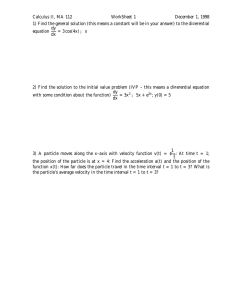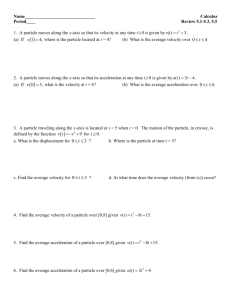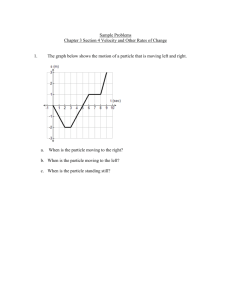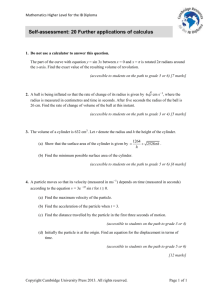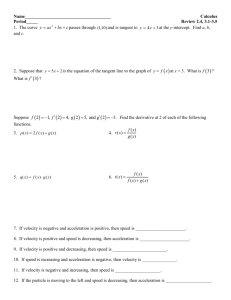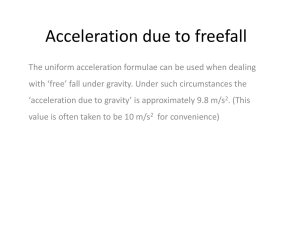Physics 221 SI Worksheet
advertisement
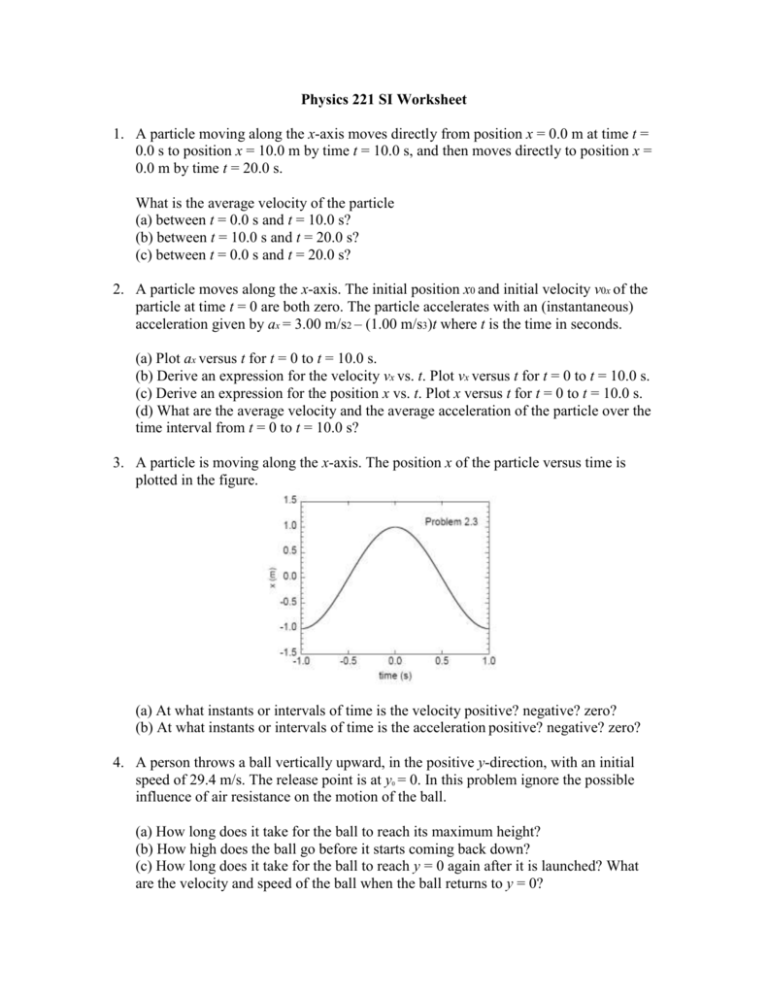
Physics 221 SI Worksheet 1. A particle moving along the x-axis moves directly from position x = 0.0 m at time t = 0.0 s to position x = 10.0 m by time t = 10.0 s, and then moves directly to position x = 0.0 m by time t = 20.0 s. What is the average velocity of the particle (a) between t = 0.0 s and t = 10.0 s? (b) between t = 10.0 s and t = 20.0 s? (c) between t = 0.0 s and t = 20.0 s? 2. A particle moves along the x-axis. The initial position x0 and initial velocity v0x of the particle at time t = 0 are both zero. The particle accelerates with an (instantaneous) acceleration given by ax = 3.00 m/s2 – (1.00 m/s3)t where t is the time in seconds. (a) Plot ax versus t for t = 0 to t = 10.0 s. (b) Derive an expression for the velocity vx vs. t. Plot vx versus t for t = 0 to t = 10.0 s. (c) Derive an expression for the position x vs. t. Plot x versus t for t = 0 to t = 10.0 s. (d) What are the average velocity and the average acceleration of the particle over the time interval from t = 0 to t = 10.0 s? 3. A particle is moving along the x-axis. The position x of the particle versus time is plotted in the figure. (a) At what instants or intervals of time is the velocity positive? negative? zero? (b) At what instants or intervals of time is the acceleration positive? negative? zero? 4. A person throws a ball vertically upward, in the positive y-direction, with an initial speed of 29.4 m/s. The release point is at y0 = 0. In this problem ignore the possible influence of air resistance on the motion of the ball. (a) How long does it take for the ball to reach its maximum height? (b) How high does the ball go before it starts coming back down? (c) How long does it take for the ball to reach y = 0 again after it is launched? What are the velocity and speed of the ball when the ball returns to y = 0?

